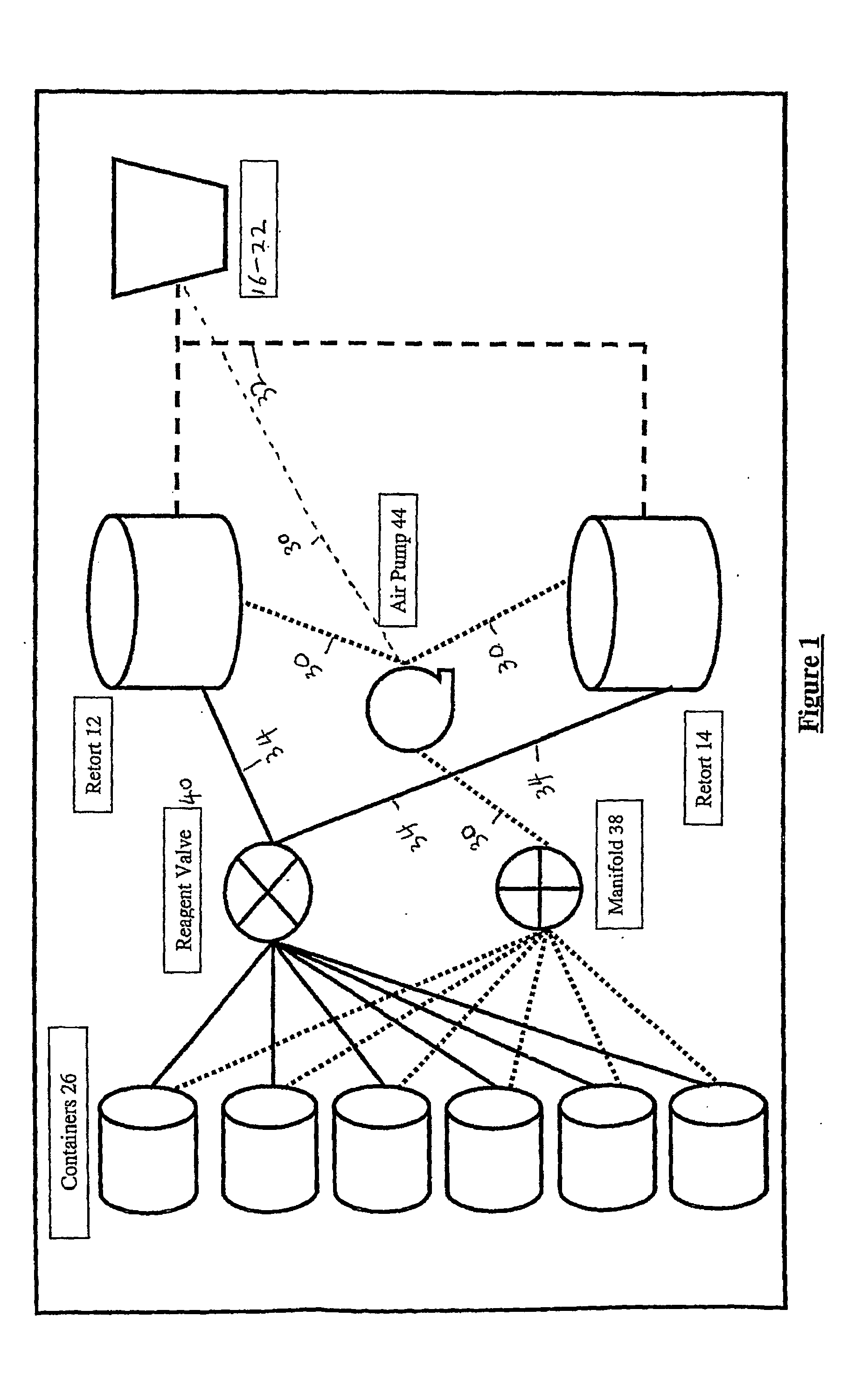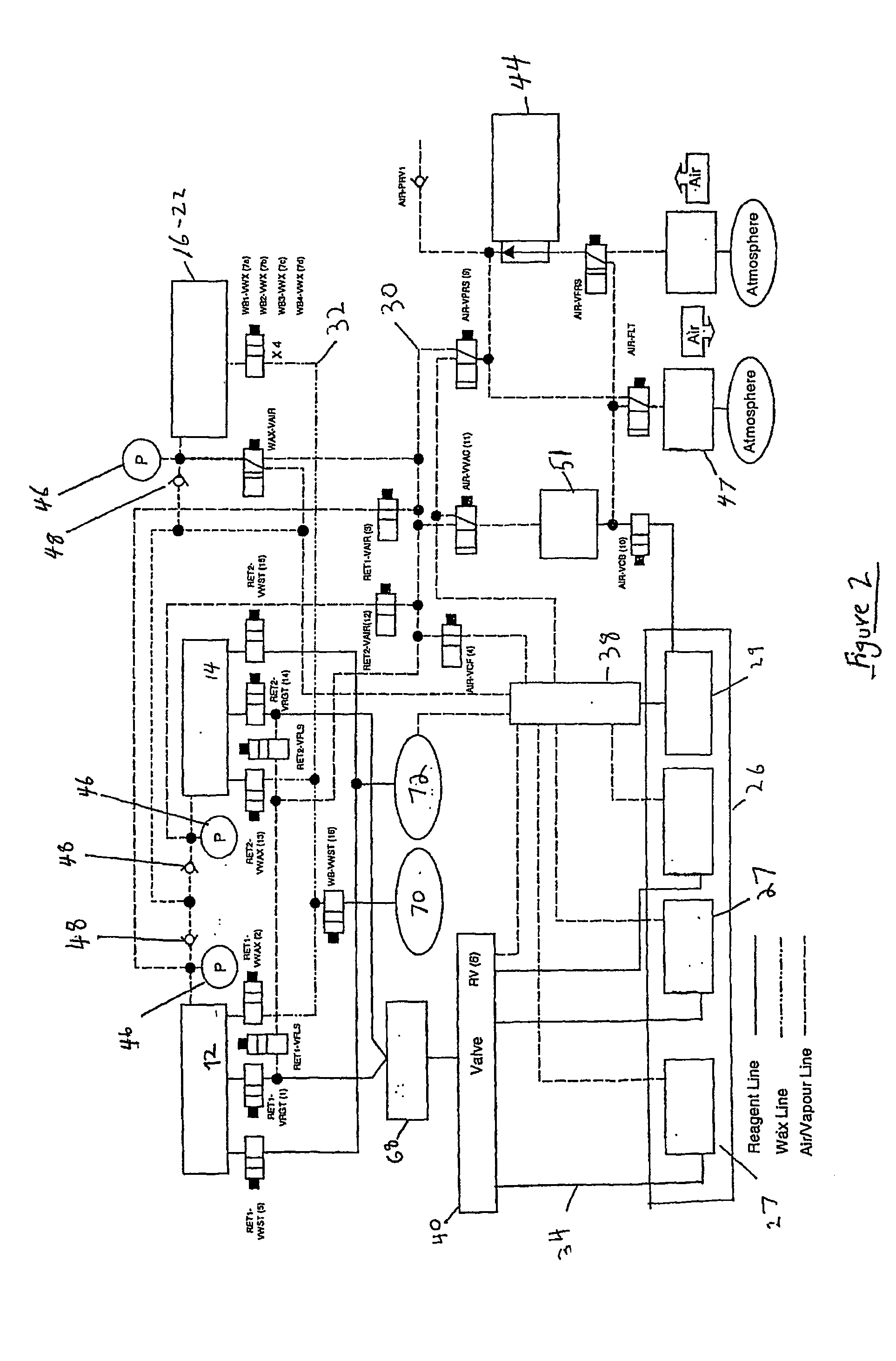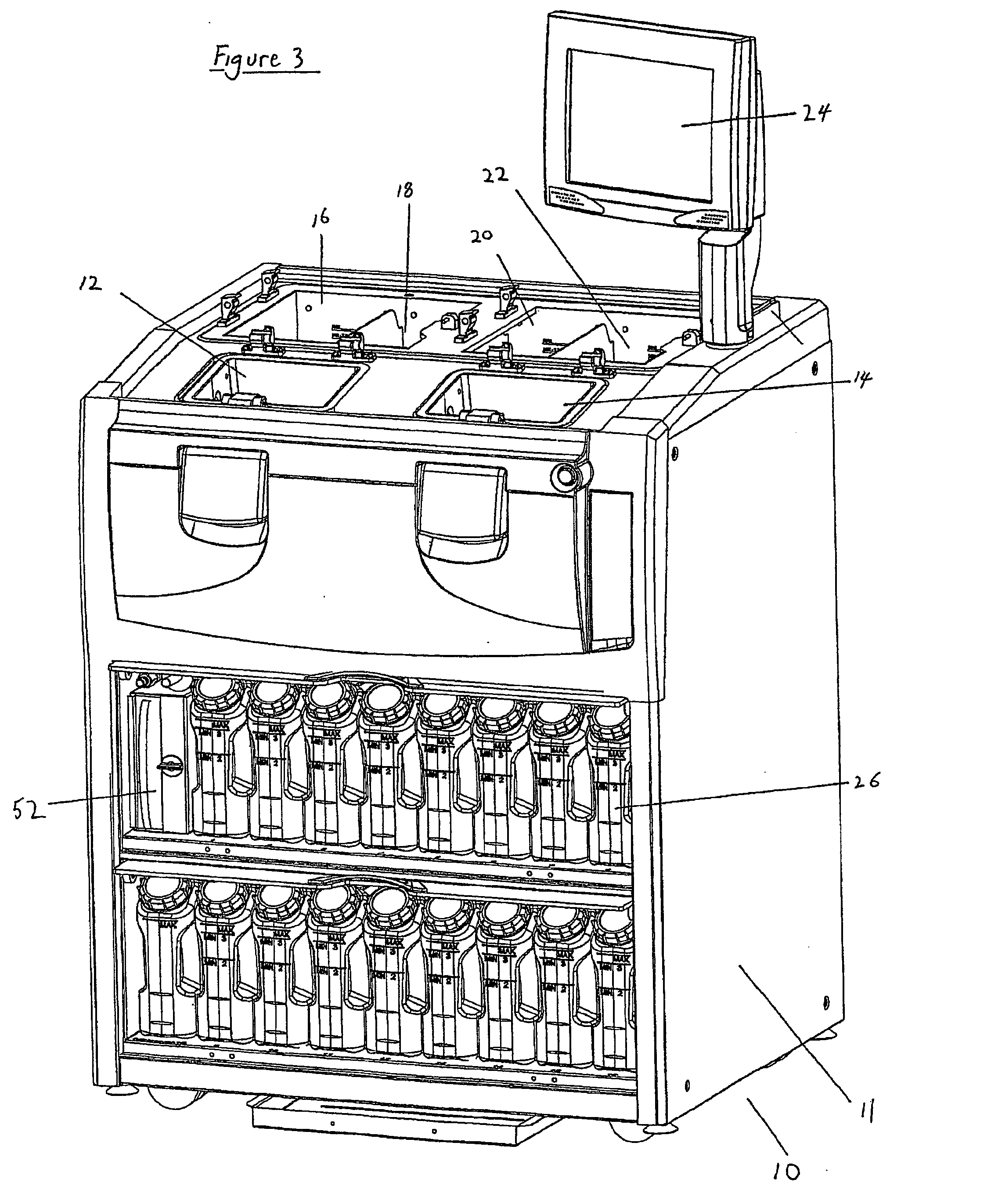Histological tissue specimen treatment
a tissue specimen and tissue technology, applied in the field of processing histological tissue specimens, can solve the problems of exposing laboratory workers to a hazardous environment, toxic xylene, and tissue samples that are still not capable of accepting paraffin, so as to reduce pressure and lower the boiling point of volatile contaminants
- Summary
- Abstract
- Description
- Claims
- Application Information
AI Technical Summary
Benefits of technology
Problems solved by technology
Method used
Image
Examples
Embodiment Construction
[0039] In FIG. 1 an example of a general schematic of the processor 10 is shown, indicating major features such as retorts 12 and 14, four infiltrating baths 16-22, containers 26, reagent valve 40, manifold 38, and air pump 44. There are three main fluid sub-systems connecting the major elements, one sub-system being the air lines 30 from pump 44 to infiltrating baths 16-22 and retorts 12 and 14. A second sub-system being infiltrating lines 32 connects infiltrating baths 16-22 to the retorts 16-22. A third sub-system is reagent lines 34 connecting the containers 26 to the reagent valve 40 and the retorts 12 and 14. Valving as shown in FIG. 2 ensures that fluid flows along the lines to the correct destination, and FIG. 2 shows a specific embodiment of fluid line connection and valve placement relative to the aforementioned elements. The electrical connections between the controller 25, valves, pump 44 and other elements have been omitted from FIG. 2 for clarity, and are considered st...
PUM
 Login to View More
Login to View More Abstract
Description
Claims
Application Information
 Login to View More
Login to View More - R&D
- Intellectual Property
- Life Sciences
- Materials
- Tech Scout
- Unparalleled Data Quality
- Higher Quality Content
- 60% Fewer Hallucinations
Browse by: Latest US Patents, China's latest patents, Technical Efficacy Thesaurus, Application Domain, Technology Topic, Popular Technical Reports.
© 2025 PatSnap. All rights reserved.Legal|Privacy policy|Modern Slavery Act Transparency Statement|Sitemap|About US| Contact US: help@patsnap.com



